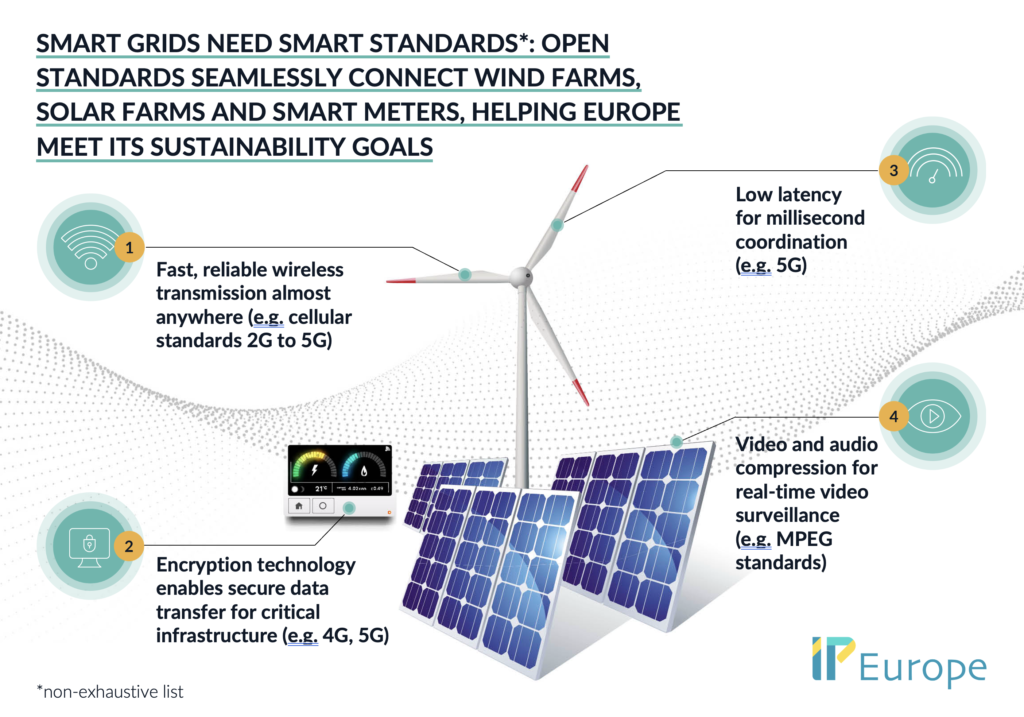In 5G and 6G, the G is for Green
Did you know 5G and 6G cellular technology can help unlock a greener future for Europe?
In recent years, but perhaps never more so than this summer, European societies have become more and more aware of the need to urgently address the climate change crisis. In this context, technology is a key enabler of a transition towards a greener, more sustainable economy. Specifically, 5G, and eventually 6G connectivity, will play an essential role in greening the economy. These cellular technologies are already becoming a basic digital infrastructure for green technologies such as smart meters and even smart cities. In these applications, smart technology, connected by 5G/6G, can reduce energy consumption by responding to changes in demand faster and more efficiently. But saving energy is only part of the game. Cellular technologies can also help produce green energy. A good example of this is the use of 5G/6G in wind farms.

Turning to the wind for green energy
Wind power is an increasingly important component of Europe’s energy supply. It was recently reported that “wind now meets 16% of Europe’s electricity demand and much more in many countries: it’s a 48% in Denmark; 38% in Ireland; 27% in Germany; 24% in Portugal; 22% in Spain. The International Energy Agency – IEA expects wind to be the number 1 [source] of power in Europe by 2027.” Wind contributes €37 billion to the EU’s GDP and provides 300,000 quality jobs in Europe.
On top of this, Europe is a major exporter of wind turbines. Fifty percent of the world’s wind power comes from turbines made by European companies.
The advantages of wind power make it a critical part of the European Commission’s plans for the future. By 2050, the Commission wants wind to provide 50% of Europe’s electricity by dramatically increasing both onshore and offshore production. The safe and efficient management of this growing wind infrastructure will rely upon cellular communications.
5G in wind farms
The need for clean wind energy is driving the development of wind farms to increasingly remote onshore and offshore locations. These massive facilities require large amounts of data for safe and efficient operation and private 5G networks provide the ideal solution for monitoring performance and wear and tear.
As explained by the renewable energy company VayuAI, wind turbines need to be spaced apart as they rotate so that the wake they produce does not interfere with other turbines. 5G connectivity facilitates the collection of real-time data about rotation, wind speed and direction that, coupled with a machine learning system, facilitate the optimisation of energy production.
As noted in Windpower Engineering & Development magazine, private 5G networks allow the collection of data such as “vibration, temperature and humidity”. This, “along with [the use of] cameras for video surveillance, which utilize private wireless networks, play an increasingly important role in enhancing the monitoring of turbines and sites, which would otherwise only be possible through an in-person visual inspection. Critically, the ability to remotely monitor equipment and schedule maintenance saves money and improves overall safety.”
In addition, 5G connectivity “allows workers to stay connected with co-workers, support vessels, helicopters, and suppliers. Maintaining clear voice communications between all these different disciplines and organizations is essential for safety and for enhancing productivity to reduce the time to deploy and maintenance costs.“
Cellular communication is central to safe and efficient operation of wind farms as well as to the efficiency of energy grids as a whole. Thus, leadership in 5G/6G is critical to Europe’s green future, as the European Commission recently recognised in its 5G Action Plan. Global competition in this area is fierce and having a clear regulatory framework can carry substantial advantages.
The role of open standards
The technology underpinning cellular communications is developed as open standards. In open standards, companies contribute their best technologies to the standard in exchange for the right to license products implementing the standards on fair, reasonable and non-discriminatory (FRAND) terms. This is the quid pro quo of open standards development particularly for R&D intensive technologies such as cellular standards. FRAND licensing is a crucial element to European leadership in 5G/6G.
Because cellular technology is ubiquitous and used by many actors, including the dominant digital platforms, implementers push regulators to reduce the value of FRAND licences. These suggestions may come in the form of a request for direct licences to be available to all levels of a supply chain, or a demand for FRAND licences to be based on the price of a component. But they are always short-sighted, seeking minor cost saving in the short term without clear benefit to consumers, while risking investment in 5G/6G in the long term.
Instead of adopting proposals designed to limit the value of FRAND licenses, European regulators should seek to support those who invest in cellular standards by facilitating FRAND licensing. What is needed are proposals which discourage hold-out (the refusal to accept the offer of a FRAND licence) and thereby promote private investment in cellular standards. The members of IP Europe stand ready to work with decision makers in Europe to develop those solutions. That will enable Europe to move towards a more connected and greener future.
Like this article and want to learn more? Subscribe to our newsletter using the form below!




